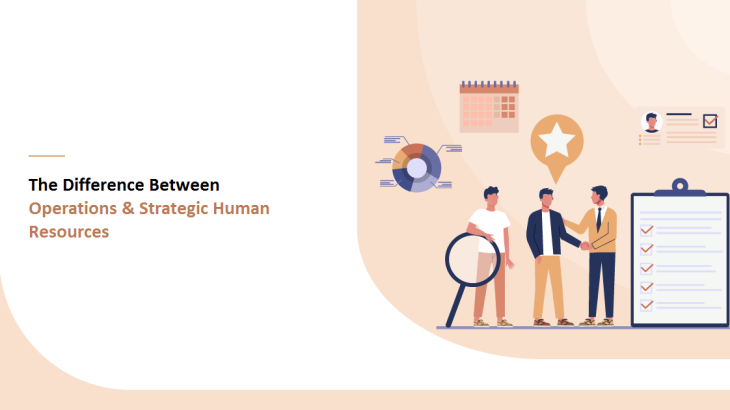At its core, the distinction between operational and strategic human resources lies in perspective. Operational HR focuses on the company’s immediate and short-term needs handling day-to-day employee and administrative functions. Strategic HR, on the other hand, takes a long-term view, aligning HR initiatives with the organization’s overall mission, goals, and growth strategies.
While they are often described as separate areas, operational and strategic HR are deeply interconnected. Think of operational HR as tactical managing the “how” of HR activities while strategic HR defines the “why” and “where” the organization is heading.
Recruiting
When HR professionals post job openings, screen resumes, conduct interviews, and perform background checks, they’re operating on the operational level. These are hands-on, task-oriented actions designed to fill current vacancies efficiently. Activities such as managing temporary staffing agencies or coordinating job fairs also fall into this category.
By contrast, strategic recruiting focuses on long-term workforce planning. It involves forecasting staffing needs months or years in advance, developing hiring policies, and collaborating with department heads to anticipate future talent requirements. Strategic HR sets the foundation that guides operational hiring activities.
Orientation and Training
Operational HR handles immediate training needs welcoming new hires, explaining company policies, conducting safety briefings, and introducing staff to the company culture. These activities ensure employees can perform their roles effectively from day one.
In the strategic HR context, training goes beyond initial onboarding. It involves designing comprehensive learning programs, establishing long-term training schedules, and collaborating with leadership to define performance standards. Strategic HR focuses on building a culture of continuous improvement and measurable skill development across the organization.
Employee Relations
Operational HR professionals manage day-to-day employee interactions, such as maintaining personnel records, resolving workplace disputes, and ensuring compliance with policies and procedures. Handling disciplinary actions or addressing grievances are also part of operational HR’s scope – focused on maintaining harmony and productivity in the present.
Strategic HR, however, takes a broader view. It looks at employee engagement and empowerment, developing programs that foster motivation, loyalty, and personal growth. Initiatives like mentoring systems, leadership development plans, or tuition reimbursement programs are examples of strategic efforts that strengthen the organization’s long-term relationship with its employees.
Performance and Retention
On an operational level, HR manages individual and departmental performance reviews, tracks attendance, handles pay adjustments, and updates benefit records. These daily tasks ensure smooth functioning and compliance.
From a strategic perspective, HR evaluates how performance management aligns with the organization’s broader objectives such as profitability, innovation, and employee satisfaction. This includes developing metrics that drive performance improvement, designing long-term recognition and rewards systems, and reviewing compensation structures to attract and retain top talent.
Even training managers in employee motivation, though operational in execution, supports a strategic objective: building a workforce that performs at its highest potential.
Conclusion
In summary, operational HR ensures that the organization runs smoothly day-to-day, while strategic HR ensures it grows effectively in the long run. Both are essential and interdependent operational HR executes the strategies that strategic HR envisions. When balanced well, they create a powerful HR function that supports both immediate success and sustainable organizational growth.








